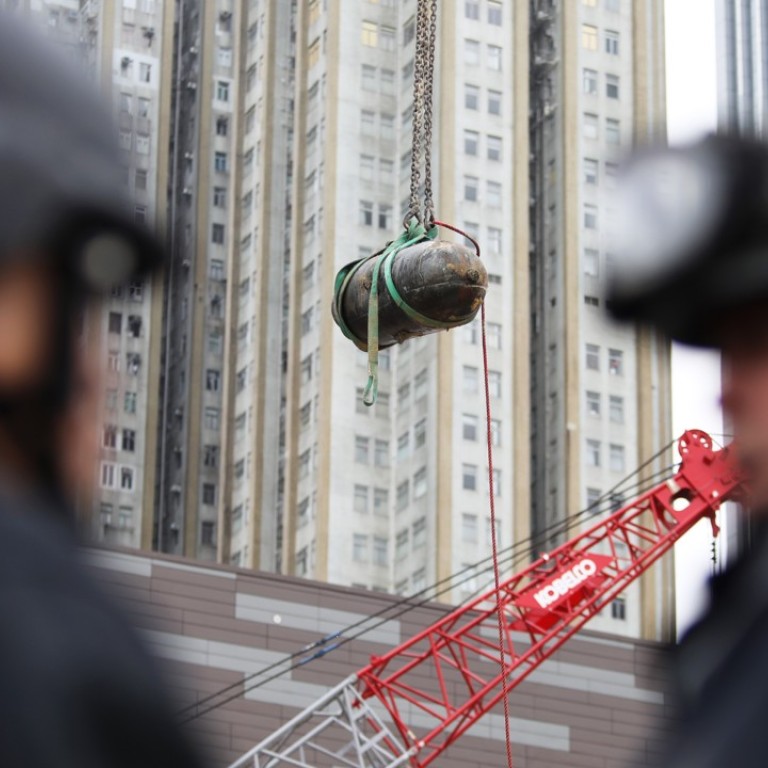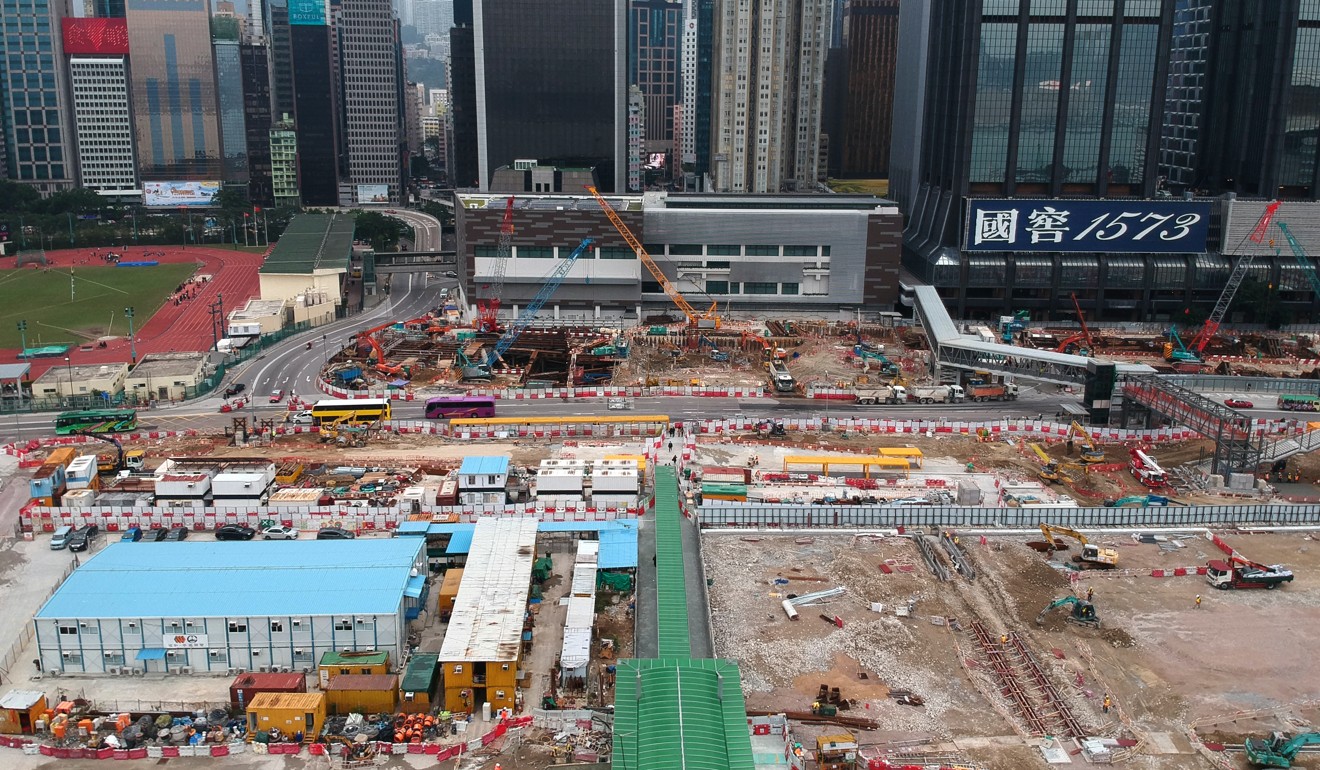
Hong Kong MTR didn’t use metal detectors before subway digging works, despite knowing area was once a war zone
The rail operator’s shock admission came after workers discovered two 450kg American-made bombs from the second world war during construction for the Sha Tin-Central rail link
Hong Kong lawmakers on Friday accused the MTR Corporation of endangering public safety after the railway operator admitted it did not use metal detectors before digging at a site in Wan Chai, even though it knew there was a risk from unexploded wartime bombs.
Instead, it relied on visual inspections by workers in the area at the junction of Convention Avenue and Tonnochy Road, where two 450kg (1,000lbs) American-made devices buried 10 metres apart from each other were found this week. The discoveries triggered major evacuations and risky bomb disposal operations.
Hong Kong police disarm second 450kg wartime bomb after ‘dirty, difficult and dangerous’ operation
MTR Corp projects director Dr Philco Wong told members of the Legislative Council’s subcommittee on railway matters that it was likely more bombs would be discovered. He said metal detectors were not used previously because it was felt they would not be useful as the site was filled with metallic material from reclamations, but they would be used from now on.
Subcommittee chairman Michael Tien Puk-sun, a railway expert, said he was shocked and other lawmakers agreed.
Meet the heroes behind the 50-hour wartime bomb disposal operations in Hong Kong
Wong said that back in 2012 during the planning stage for the 17km cross-harbour link, bomb experts told them that there was a risk of unexploded munitions.
American forces had bombarded Japanese shipping and docking facilities on the northern coastline of Hong Kong Island when they occupied the city from January 1942 to August 1945. The area where construction is taking place was reclaimed from the sea after the second world war.
Wong said: “Because of this, in 2016 when we started the rail construction we adopted police expert opinions of using a prudent way to excavate the site.
“Our workers used very light equipment to slowly dig up the area with experienced staff monitoring their work,” he said, adding that according to the safety guidelines, they needed to avoid striking the bomb’s ignition device at its head and tail.
Why does Hong Kong have so many buried wartime bombs?
Wong said MTR Corp would be more prudent in handling excavation works, including using metal detectors.
“The bombs were discovered at the seabed of the reclaimed site and if there are still other bombs they are likely to be located in the seabed area … So far we’ve only excavated 50 per cent of the seabed so there are chances that there are other bombs buried in the remaining seabed,” he said.
There were no plans to suspend construction works for an overall inspection of the site, he said, adding that work had resumed after a safety inspection on Thursday afternoon confirmed that there was no structural damage from the bomb disposal operations.
Civic Passion lawmaker Cheng Chung-tai said the rail giant put workers at risk. “Since you said there might be chances of discovering other bombs, why didn’t you suspend the construction work at the site and conduct a thorough inspection?
“Why would you only rely on workers’ visual inspection and excavation to discern any dangerous objects?” he asked.
Lawmaker Claudia Mo Man-ching charged: “Why did you fail to warn the public about the bomb risks back in 2012? What if there are still six bombs underground there? The workers are not bomb experts and you expect them to discern the hidden bombs? How can you be accountable to the people living and working in that area?”

Wong said: “Since two bombs were already unearthed, we need to be more careful so we will now use metal detectors.”
MTR’s general manager Lee Tze-man said workers had dug about 15 meters underground, which is where bombs would likely be embedded.
“In the next two months, we expect our excavation will penetrate [further down] and we’ll be able to know if there are more bombs buried [at the site],” he said.

